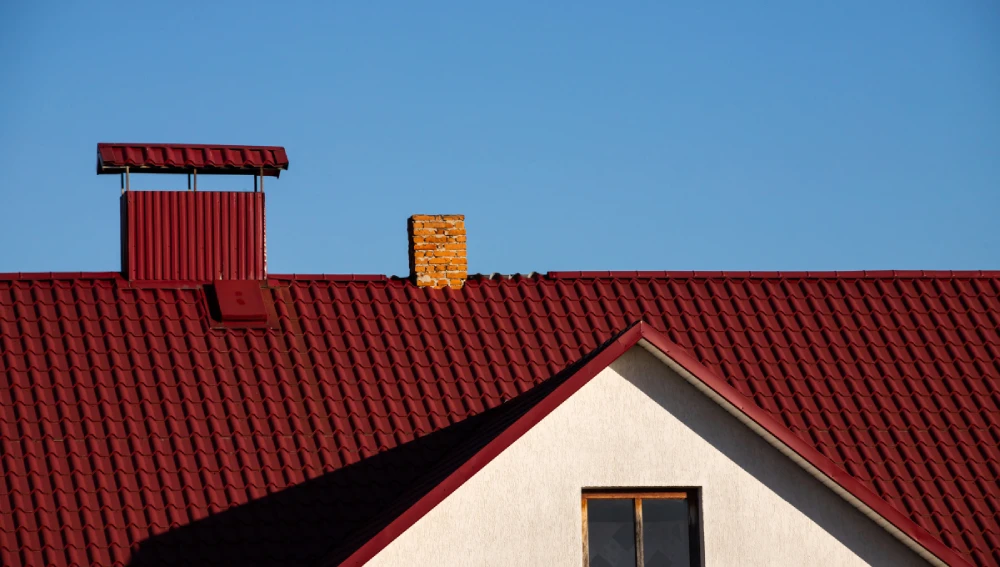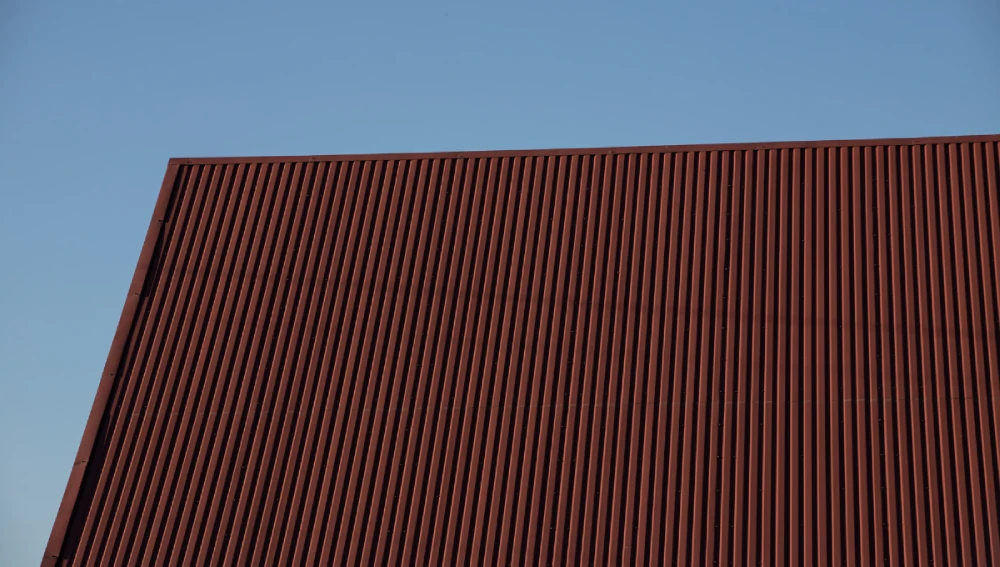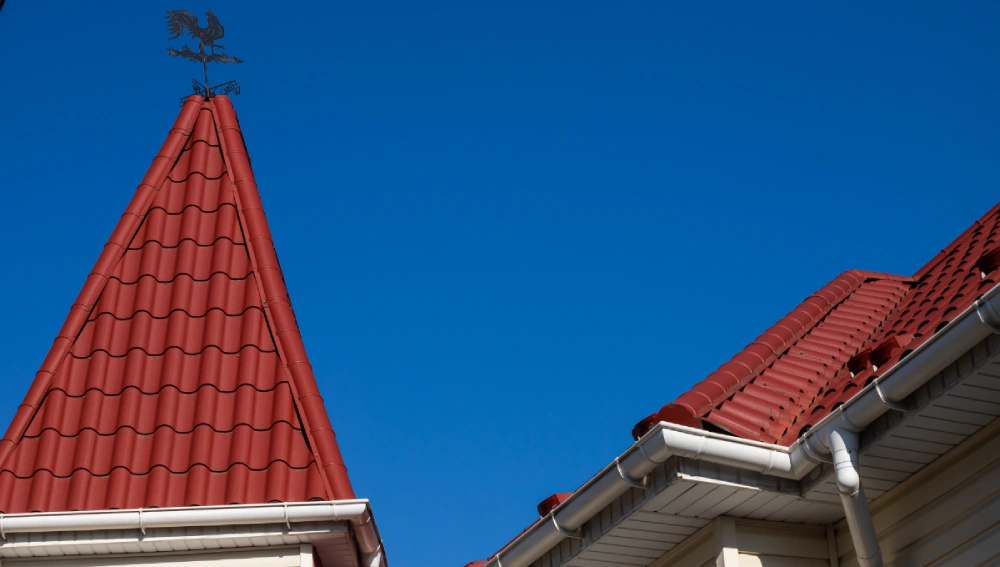Roofing is an overlooked feature in building construction. It is often designed depending on the location, climatic conditions, and the type of construction. Roofing plays a key role in highlighting the entire building’s features. This blog explains the different types of roofing used in the construction of buildings.
- 1 21 Types of Roofs in Building Construction
- 1.1 Curved Roof
- 1.2 Flat Roof
- 1.3 Gable Roof
- 1.4 Hip Roof
- 1.5 Gambrel Roof
- 1.6 Mansard Roof
- 1.7 Butterfly Roof
- 1.8 Asphalt Shingle Roof
- 1.9 Shed Roof
- 1.10 Dutch Roof
- 1.11 Blue Roof
- 1.12 Combination Roof
- 1.13 Dormer Roof
- 1.14 Membrane Roofing
- 1.15 Metal Roofing
- 1.16 Tile Roofing
- 1.17 Slate Roofing
- 1.18 Clerestory Roof
- 1.19 Jerkinhead Roof
- 1.20 Dome Roof
- 1.21 M Shaped Roof
- 2 Conclusion
- 3 FAQs
21 Types of Roofs in Building Construction

The overall performance of the building depends on the type of roofing the building has. Twenty-one different types of roofs are used for construction buildings, which are discussed below.
Curved Roof
As the name states, a curved roof is one of the roofing construction models that has a sheathing and underlying framing, making a gentle curve when looked at from the side. It is an amazingly modern design that can be used for small cottages or bungalows. Shell roofs, barrel vaults, and domes are types of curved roofs.
Flat Roof
Flat roofs are basic designs that need no inclines to navigate, making them easy to maintain and install. These roofs absorb heat in the attic and can be converted to green roofs for plants to grow.
Gable Roof
A gable roof is the ultimate protection for both the people living there and the building. In this roof type, the two sides of the slope face downward towards the wall. The roof can be of great use in countries that experience heavy snow or rain.
Hip Roof
A hip roof or a hip in a roof is a type of roof where the slope flows downwards on all four sides of the roof from the peak. It is costly compared to the gable roof as it requires more roof materials.
Gambrel Roof
The gambrel roof contains only two slopes. The upper slope is normally steeper than the lower one. It is mostly seen in 18th-century colonial homes in North American Dutch. It does not decrease the space inside the home but provides better protection to the home.

Mansard Roof
A mansard roof is also known as a French or Curb roof. On the top, the structure remains flat, but on the sides, it has a double slope with a steep pitch. The types of mansard roofs include straight, convex, concave, and S-shaped. Cedar shake shingles are one of the great materials for mansard roofs.
Butterfly Roof
The butterfly roof is a modern contemporary design. In this design, the two roofs are higher in height compared to the centre one. The roof was designed to make sure the water flows exactly into the drainage network.
Asphalt Shingle Roof
The vital component of an asphalt shingle roof is the asphalt combined with other materials. The roofing contains other materials, namely tar, fibreglass, and granules of asphalt. The flooring consists of two types of warranties: one that comes from the manufacturer warranty and the other that comes from the workmanship warranty from the contractor.
Shed Roof
A shed roof, also known as a catslide, skillion, lean-to roof, or pent roof, is widely used in New Zealand and Australia. These roofs prevent the high-degree rays of sun from entering the home and provide a subtle shade to the home.
Dutch Roof
It is also known as a gable roof in Britain. On the top of the hip roof, the gable roof is present. It creates a timeless aesthetic for the home.
Blue Roof
The building’s blue roof is normally used to store water temporarily and then release it slowly. It is specifically used to control drainage on roofs.
Combination Roof
One great example of a combination roof is the gable and hip roof. The hip roof is the ending of the roof, while the gable makes the body. This design is pricey but adds a complex design to it.
Dormer Roof
A dormer is not entirely a roof design, but it highlights the sloping roof by giving the vertical window a space for sunlight. It is mostly used in bedrooms.
Membrane Roofing
A membrane roof has no slope to it. They have tight water surfaces and can be used in areas where rapid water displacement is required. Different types of membranes are used for specific purposes.
Metal Roofing
Metal roofs are classified into three types, namely weathering steel, galvalume, and galvanised. These roofs are not native to water and are resistant to corrosion.
Tile Roofing
Similar to metal roofs, tile roofs have a longer lifespan of more than a hundred years. They can protect from extreme weather conditions, including heat, fire, and rain.
Slate Roofing
A slate is made from metamorphic rocks that are produced from volcanic ash and clay. The slate comes in different colours and can be cut into desired shapes. They last for a lifetime.
Clerestory Roof
A clerestory roof aims to permit natural light and air. The roofs are placed above eye level for this purpose. It is a classic French-style roof design.
Jerkinhead Roof
A jerkinhead roof is a gable roof that has two peaked ends and is also called a snub gable. The advantage is that the clipped ends protect from extreme wind and provide stability.
Dome Roof
The Dome roof is yet another classic roof style used in construction. They are built from various materials, namely wood, metal, copper, concrete, fibreglass, and adobe. They can resist strong winds and snow loads.
M Shaped Roof
A M-shaped roof highlights different sections of the roof with a vertical wall meeting the roof pitch. They may not be suitable in areas where there will be heavy rains or snow, as these roofs are not continuous.
Conclusion
Make the most of your roof. Make your roofing dictate your knowledge and intelligence through simple yet modern designs. Do contact experts in the field and let your home roofs shine.
FAQs
The three main types of roofs are hip, gable, and flat roofs.
One of the best roof types could be slate because of its life span of over 15 years. However, tiles or metal can also be used depending on the purpose.
The safest roof types could be metal roofs, tile roofs, and slate roofs.

